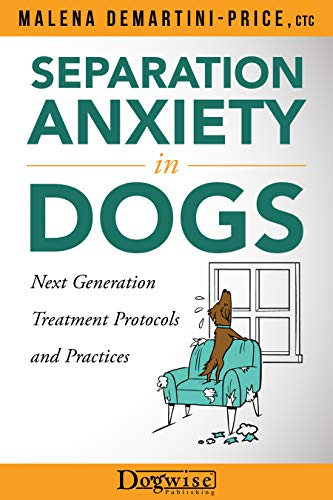Separation Anxiety in Dogs: Next Generation Treatment Protocols and Practices
amazon.com
Separation Anxiety in Dogs: Next Generation Treatment Protocols and Practices

MYTH: Only rescue dogs get separation anxiety.
With isolation distress, any person accompanying the dog will do; it does not have to be the main caregiver.
more common presentation is actually isolation distress. The clinical condition of separation anxiety is when a dog does not tolerate being alone without his specific person or people;
There are numerous concerning alone-time behaviors that are not actually separation anxiety, although they can appear similar to the untrained eye. Some examples are alarm barking, housetraining mishaps, and other behaviors born of under-stimulation and lack of enrichment.
Introduce pre-departure cues carefully and individually after some duration is achieved. Lower criteria in one aspect of difficulty if you are raising criteria in another aspect. Keep sessions at 20 to 30 minutes (there are some exceptions to this rule). Require the client to take mini-breaks between each step in their mission, approximately 30 to
... See moreConduct about five days a week of gradual and systematic absence rehearsals that follow a particular set of rules. Stay beneath or at threshold at all times. Use warmups (discussed below) as needed with the individual dog (there are some exceptions). Keep all warmups below 60 seconds (there are rare exceptions). Use variability in your day-to-day
... See moreMYTH: Some breeds are more likely to experience separation anxiety.
Puppies, like adolescent or adult dogs, benefit from systematic desensitization when there is a presenting fear. A separation anxiety protocol for puppies differs only in a few aspects. It is typically appropriate to start with short sessions when working with puppies. We most often break the puppy missions up into two sections of 10 to 15 minutes
... See moreOther than the times the client is doing specified training, the dog will not be left unsupervised.